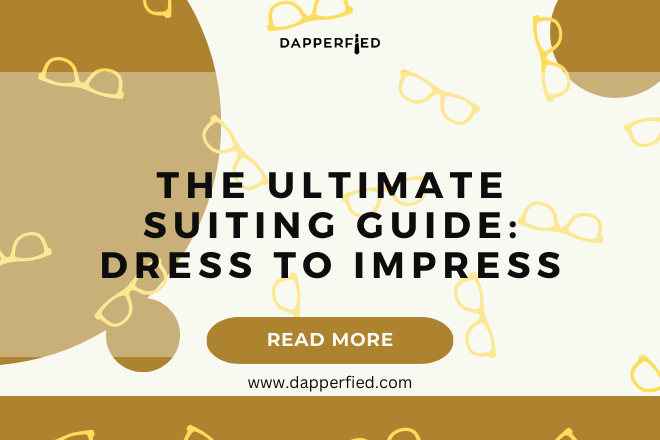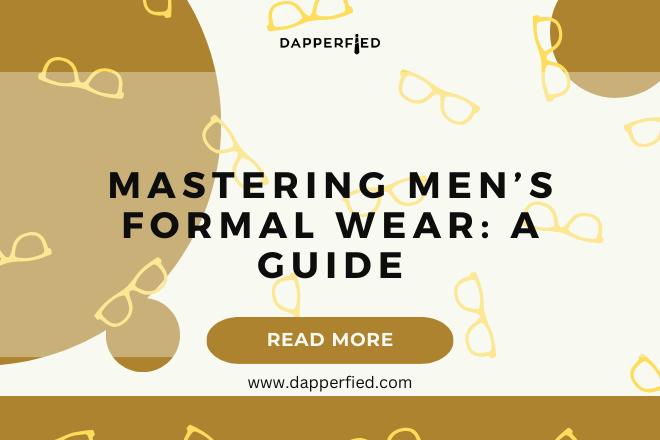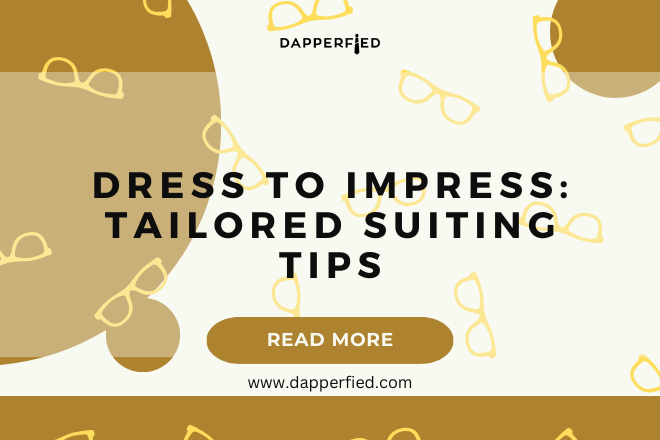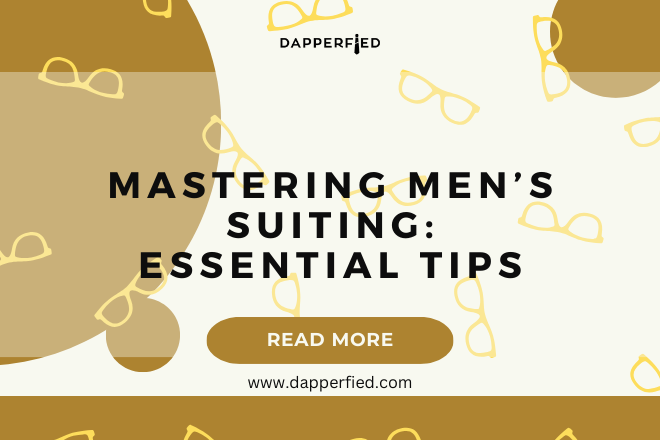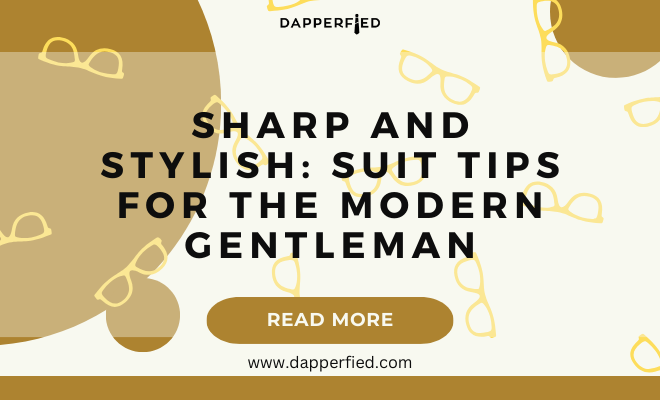
Men's Style
Sharp and Stylish: Suit Tips for the Modern Gentleman
A well-fitted suit is an essential wardrobe staple for any man. It has the power to transform a man’s appearance, making him look sharp, stylish, and put-together. Whether it’s for a formal event, a job interview, or a special occasion, a well-fitted suit can boost confidence and leave a lasting impression.
When a suit fits properly, it enhances the wearer’s physique and highlights his best features. It creates clean lines and a streamlined silhouette that exudes elegance and sophistication. A well-fitted suit not only looks good but also feels good, allowing the wearer to move with ease and comfort.
Key Takeaways
- A well-fitted suit is crucial for a sharp and stylish look.
- Consider fabric, color, and pattern options when selecting a suit.
- Classic, modern, and trendy styles offer a range of options for men’s suiting.
- Finding the perfect fit through tailoring is essential for a polished appearance.
- Budgeting, shopping, and alterations are important factors to consider when buying a suit.
Suit Selection Tips: Fabric, Color, and Pattern Options
Choosing the right fabric for a suit is crucial as it determines its overall look and feel. For formal occasions, opt for fabrics like wool or wool blends, which are classic and timeless. These fabrics drape well and have a luxurious feel. For warmer climates or more casual events, consider lightweight fabrics like linen or cotton.
Color options for suits are vast, but it’s important to choose one that suits the occasion and your personal style. Classic colors like navy blue, charcoal gray, and black are versatile and appropriate for most events. They convey professionalism and sophistication. Bolder colors like burgundy or forest green can make a statement but should be reserved for more fashion-forward occasions.
Pattern options can add visual interest to a suit and allow you to showcase your personal style. Pinstripes are classic and elegant, while checks or plaids can add a touch of personality. When mixing patterns, ensure that they complement each other and don’t clash.
Men’s Suiting Styles: Classic, Modern, and Trendy Options
When it comes to suit styles, there are three main categories: classic, modern, and trendy.
Classic styles never go out of fashion and are characterized by their timeless appeal. These suits have a traditional cut, with a single-breasted jacket, notch lapels, and straight-leg trousers. Classic styles are versatile and can be worn for both formal and semi-formal occasions.
Modern styles are sleek and stylish, with a slimmer fit and narrower lapels. These suits have a more contemporary look and are favored by younger men or those who prefer a more tailored silhouette. Modern styles often feature double-breasted jackets or slim-fit trousers.
Trendy options are bold and daring, pushing the boundaries of traditional suit styles. These suits may feature unconventional cuts, unique fabrics, or eye-catching patterns. Trendy suits are best suited for fashion-forward events or occasions where you want to make a statement.
Tailored Suit Guide: Finding the Perfect Fit
| Metrics | Values |
|---|---|
| Number of pages | 10 |
| Number of words | 3,500 |
| Number of images | 8 |
| Number of videos | 0 |
| Number of sections | 5 |
| Number of sub-sections | 15 |
| Number of tips | 25 |
| Number of recommended brands | 5 |
While off-the-rack suits can be convenient, nothing beats the fit of a tailored suit. A tailored suit is made specifically for your body measurements, ensuring a perfect fit that flatters your physique.
The key to finding the perfect fit is to pay attention to the suit’s proportions. The jacket should hug your shoulders without any excess fabric or pulling. The sleeves should end at your wrist bone, allowing about half an inch of your shirt cuff to show. The jacket’s length should cover your buttocks and end just above the curve of your thumb when your arms are relaxed at your sides.
For trousers, the waistband should sit comfortably on your natural waistline without any sagging or tightness. The length should be long enough to cover the top of your shoes but not so long that they bunch up at the ankles.
Suit Buying Tips: Budgeting, Shopping, and Alterations
When buying a suit, it’s important to set a budget beforehand. Suits can range in price from affordable options to high-end designer brands. Determine how much you’re willing to spend and stick to it. Remember that a well-fitted suit doesn’t have to break the bank.
When shopping for a suit, consider visiting multiple stores to compare options and prices. Don’t be afraid to try on different styles and sizes to find the one that suits you best. Take your time and don’t rush the decision.
Once you’ve found the perfect suit, it’s likely that some alterations will be needed to achieve the ideal fit. Find a reputable tailor who specializes in suit alterations. They will be able to make adjustments to the jacket’s shoulders, sleeves, and waist, as well as the trousers’ waistband and length. A well-tailored suit will make all the difference in how it looks and feels on your body.

Men’s Formal Wear: Dress Codes and Occasions

Understanding dress codes for formal events is essential to ensure that you’re appropriately dressed for the occasion. The most common dress codes for formal events are black tie and white tie.
Black tie attire typically consists of a black tuxedo jacket, matching trousers, a white dress shirt, a black bow tie, and black patent leather shoes. White tie attire is the most formal dress code and requires a black tailcoat, matching trousers with a satin stripe, a white wing-collar shirt, a white bow tie, and black patent leather shoes.
For less formal occasions, such as weddings or cocktail parties, a dark suit in navy blue or charcoal gray is appropriate. Pair it with a crisp white dress shirt, a solid-colored tie, and polished leather shoes.
When dressing for a job interview, it’s important to project professionalism and confidence. Opt for a conservative suit in a classic color like navy blue or charcoal gray. Pair it with a white or light blue dress shirt, a simple tie, and polished leather shoes.
Accessorizing Your Suit: Ties, Pocket Squares, and Shoes
Accessorizing your suit can elevate your overall look and add a touch of personal style. The most common accessory for a suit is a tie. When choosing a tie, consider the color and pattern of your suit. A solid-colored tie in a complementary shade is always a safe choice. For a more daring look, opt for a patterned tie that adds visual interest.
Pocket squares are another accessory that can enhance your suit’s appearance. They add a pop of color and texture to your jacket’s breast pocket. When choosing a pocket square, consider the color and pattern of your suit and tie. It should complement the overall look without overpowering it.
Shoes are an important part of any suit ensemble. Opt for polished leather shoes in black or brown, depending on the color of your suit. Ensure that they are clean and well-maintained, as scuffed or worn-out shoes can detract from an otherwise polished look.
Maintaining Your Suit: Cleaning and Storage Tips
To keep your suit looking its best, proper cleaning and storage are essential. Dry cleaning is recommended for suits to remove any stains or odors. However, frequent dry cleaning can cause the fabric to deteriorate over time. Only dry clean your suit when necessary and opt for spot cleaning or steaming in between wears.
When storing your suit, hang it on a sturdy wooden or padded hanger to maintain its shape. Avoid wire hangers as they can cause the shoulders to stretch or deform. Cover the suit with a breathable garment bag to protect it from dust and moths.

To maintain the suit’s shape and structure, avoid overstuffing pockets or sitting for long periods with the jacket buttoned. Allow the suit to rest and air out after wearing it before returning it to the closet.
Suiting Etiquette: Dos and Don’ts for Wearing a Suit
Proper etiquette when wearing a suit is important to make a good impression. Here are some dos and don’ts to keep in mind:
Dos:
– Ensure that your suit is clean, pressed, and well-maintained.
– Wear a dress shirt that is clean and properly ironed.
– Match your belt to your shoes in terms of color and finish.
– Button the top button of your jacket when standing and unbutton it when sitting.
– Keep accessories minimal and tasteful.
Don’ts:
– Wear a suit that is ill-fitting or wrinkled.
– Wear a tie that is too long or too short.
– Wear socks that are a different color than your trousers.
– Over-accessorize with flashy or distracting items.
– Wear a suit jacket without a dress shirt underneath.
Embracing Your Sharp and Stylish Persona
In conclusion, a well-fitted suit has the power to transform a man’s appearance and boost his confidence. By following the tips outlined in this article, you can select the right suit for any occasion, find the perfect fit, and accessorize it to reflect your personal style.
Remember that a suit is not just an outfit but a statement. Embrace your sharp and stylish persona by wearing a suit that makes you feel confident and comfortable. With the right fit, style, and accessories, a suit can make a lasting impression and leave others in awe of your impeccable taste.
If you’re looking to elevate your suit style, one essential element to consider is your choice of footwear. A great pair of shoes can make all the difference in completing a polished and sophisticated look. In this article, we explore the Cole Haan Men’s Air Carter Cap Toe Oxford, a shoe that combines classic style with modern comfort. With its sleek design and cushioned insole, this oxford is perfect for both formal occasions and everyday wear. To learn more about this stylish shoe and how to incorporate it into your suit ensemble, check out the related article on Dapperfied: Cole Haan Men’s Air Carter Cap Toe Oxford.
FAQs
What are some common suit styles?
Some common suit styles include the classic two-button suit, the three-button suit, the double-breasted suit, and the single-breasted suit.
What is the difference between a single-breasted and double-breasted suit?
A single-breasted suit has a single row of buttons down the front, while a double-breasted suit has two rows of buttons.
What is the difference between a two-button and three-button suit?
A two-button suit has two buttons on the front of the jacket, while a three-button suit has three buttons. The top button on a three-button suit is typically not meant to be buttoned.
What is the most versatile suit color?
Navy blue is considered the most versatile suit color as it can be worn in both formal and casual settings.
What is the proper fit for a suit?
A properly fitting suit should fit snugly but not be too tight. The jacket should fit well in the shoulders and the sleeves should end at the wrist bone. The pants should fit well in the waist and hips and have a slight break at the ankle.
What accessories should be worn with a suit?
Accessories that can be worn with a suit include a tie, pocket square, dress shoes, and a belt. It is important to choose accessories that complement the suit and do not clash with it.

